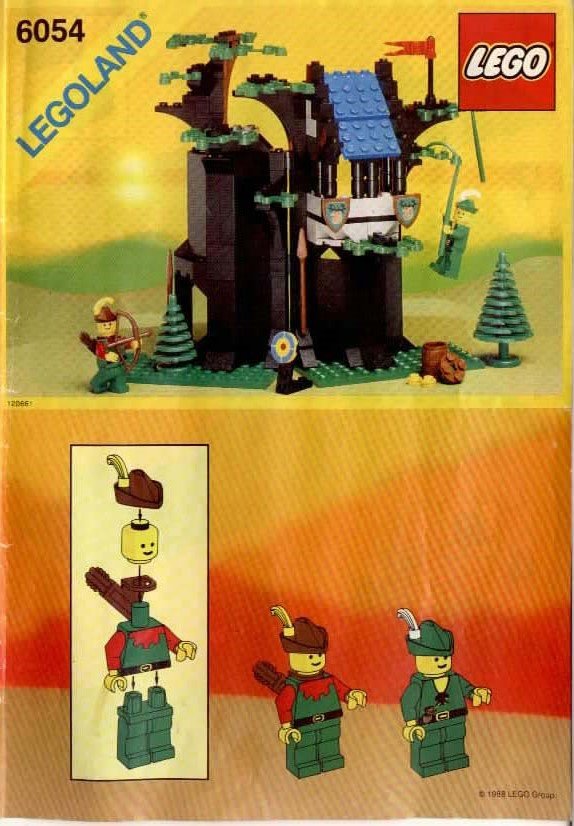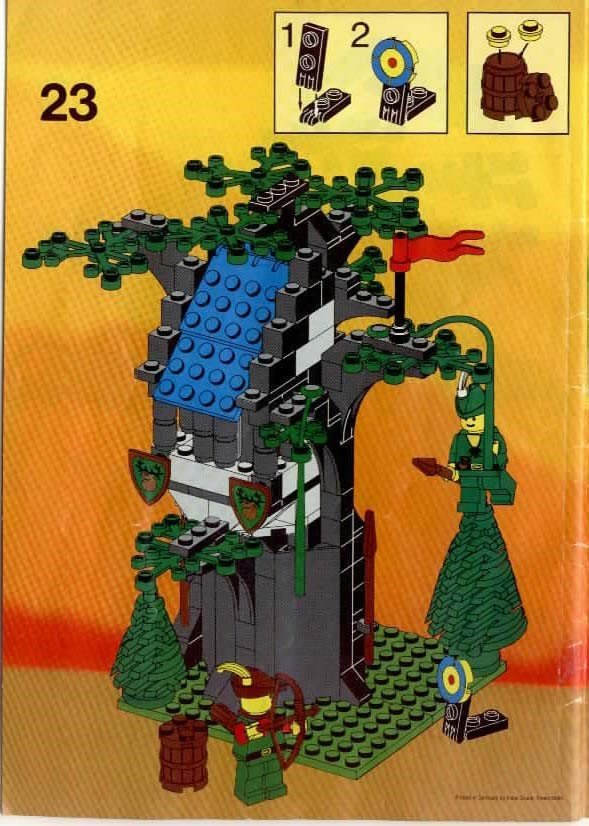How LEGO Instructions Have Changed Over Time: A Forest of Discovery
/Best of BrickNerd - Article originally published October 17, 2022.
A common gripe among AFOLs of a certain age is that the instructions have been way oversimplified. “When I was a kid a whole castle had less than 50 steps!” (6074 Black Falcon’s Fortress had 36 and 6077 Forestmen’s River Fortress had 22—OK more of a tower but still). While building the recent Gift With Purchase (GWP) set 40567 Forest Hideout, I was pondering this complaint. Especially when assembling the cut-out doorway and remembering this step being frustrating as a kid—and it is still fiddly and frustrating!
One of my binders of saved instructions!
Since 40567 is a direct remake of 6054 Forestmen’s Hideout, I thought a comparison of the instructions might be interesting. I still have the instructions to 6054 as my dad cut them apart and covered many of my early instructions in clear contact paper. Thankfully for everyone else, they are available online too!
Let’s Start With The Basic Numbers
6054 Forestmen’s Hideout was released in 1988 according to Brickset and had 201 pieces. Its instruction booklet was 16 pages measuring 8” x 6” (20.3 cm x 15.2 cm) with 23 steps. Sub-assemblies are depicted in highlight boxes as fully assembled.
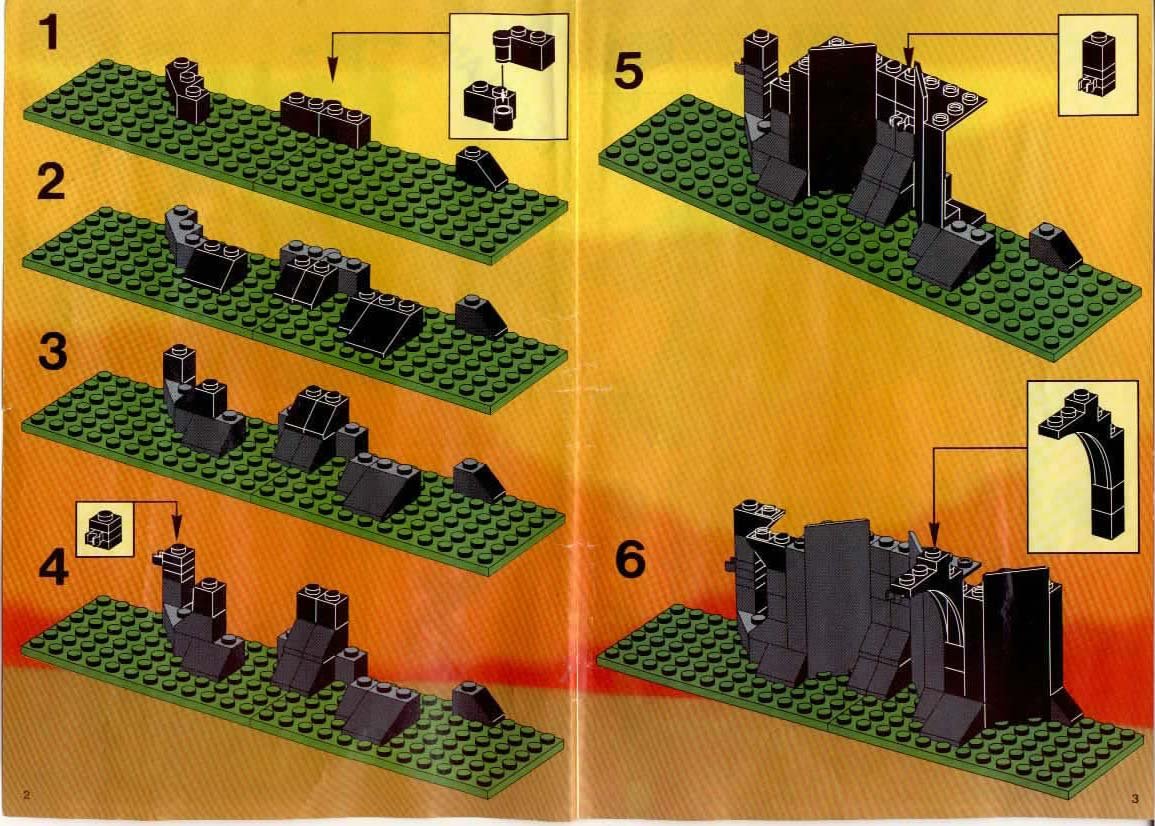

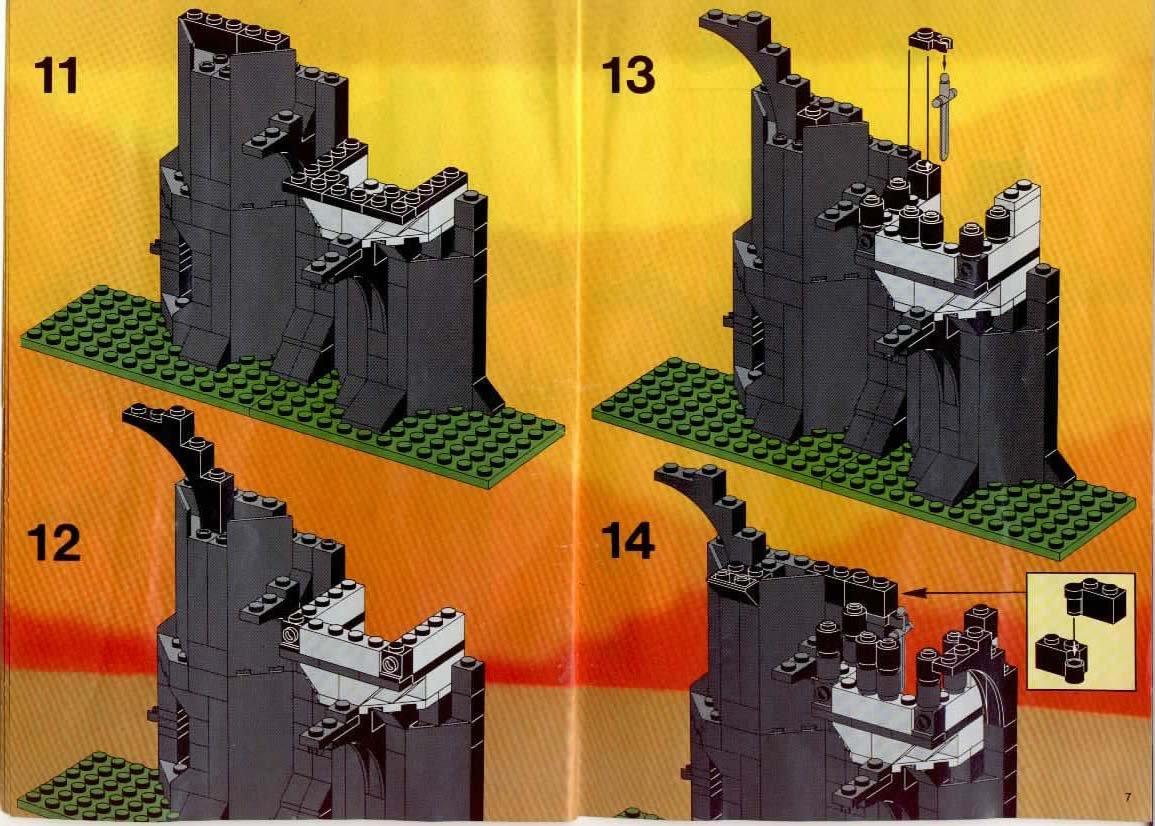
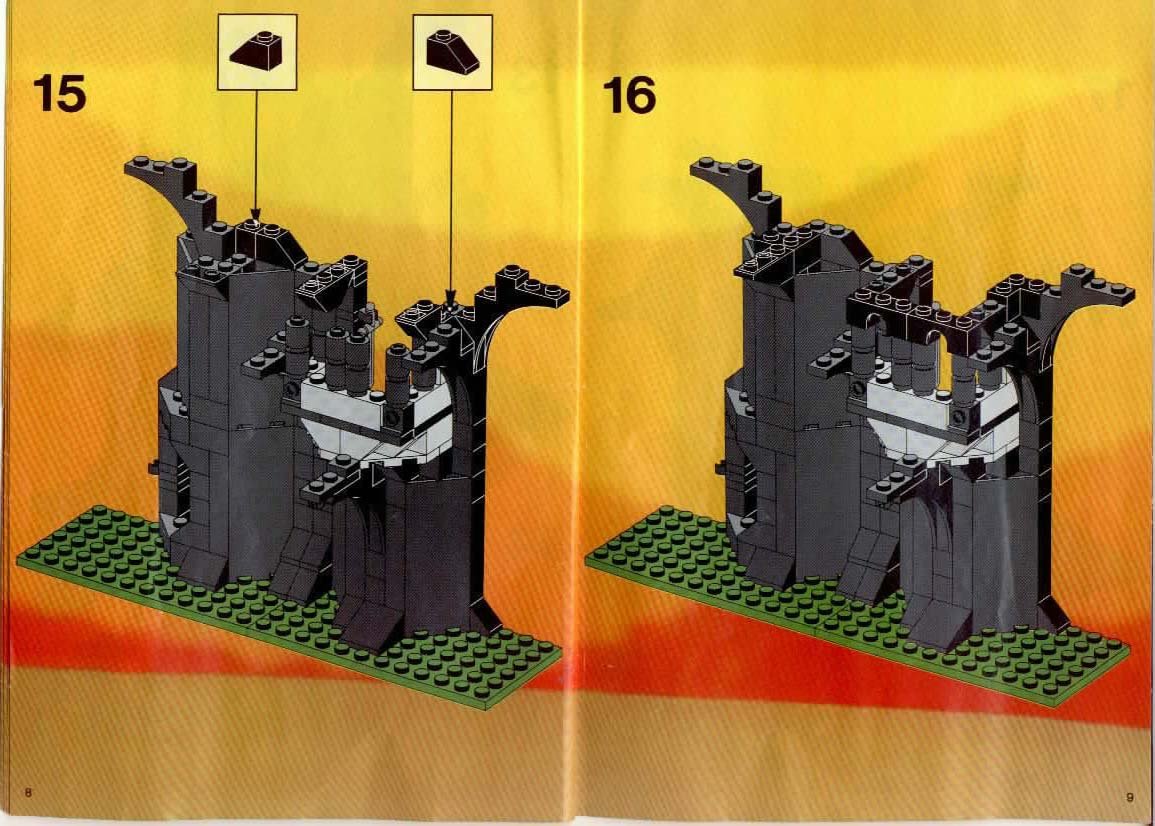
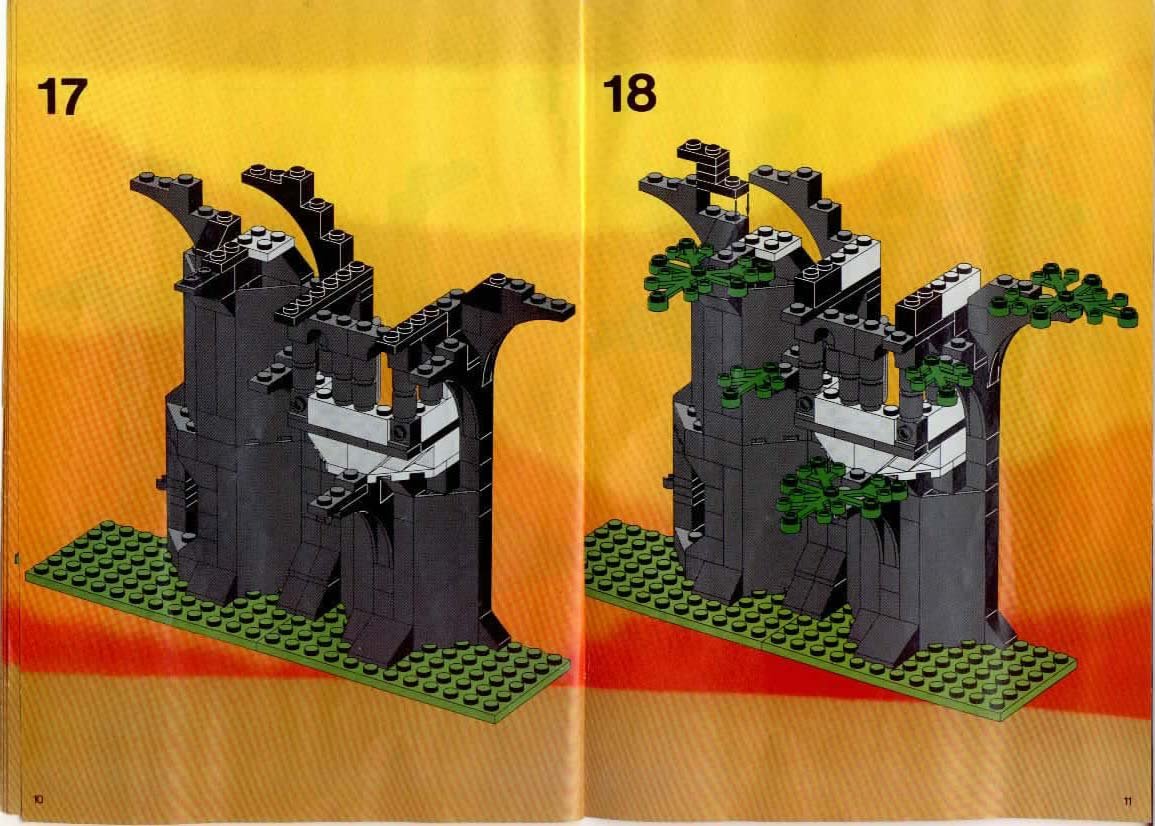
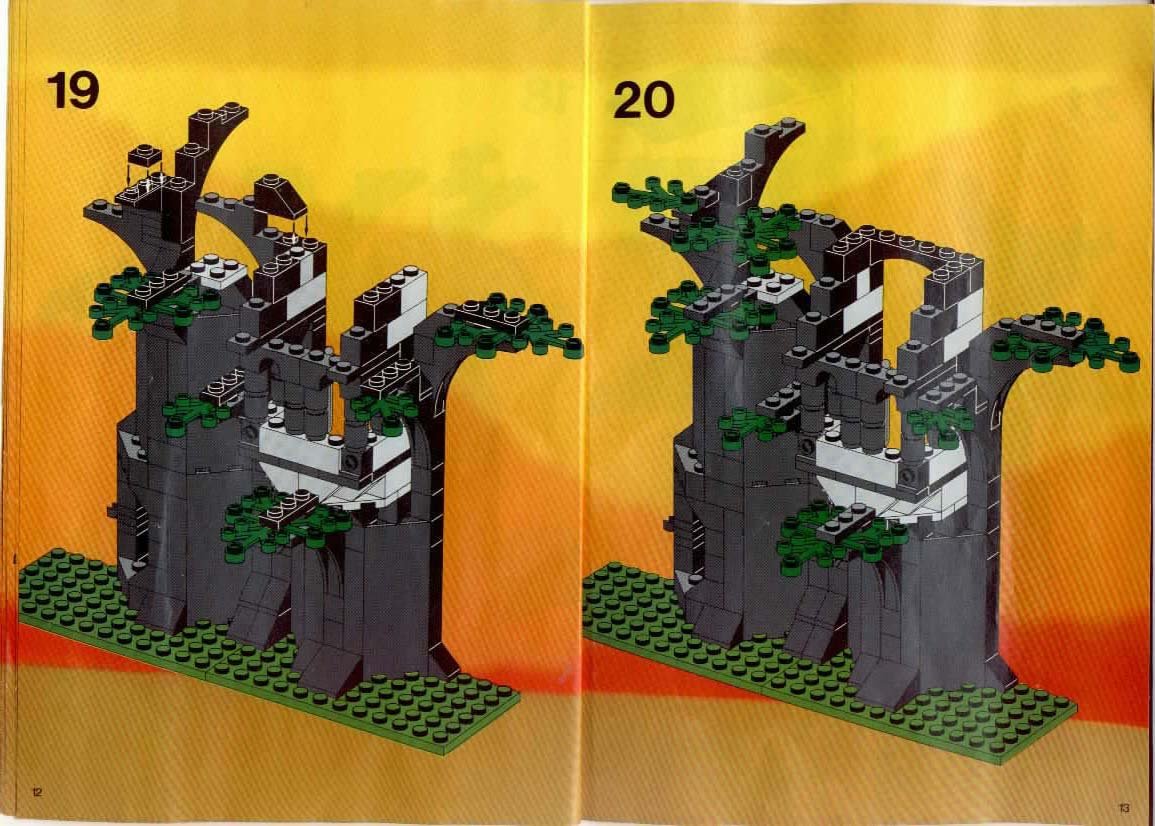
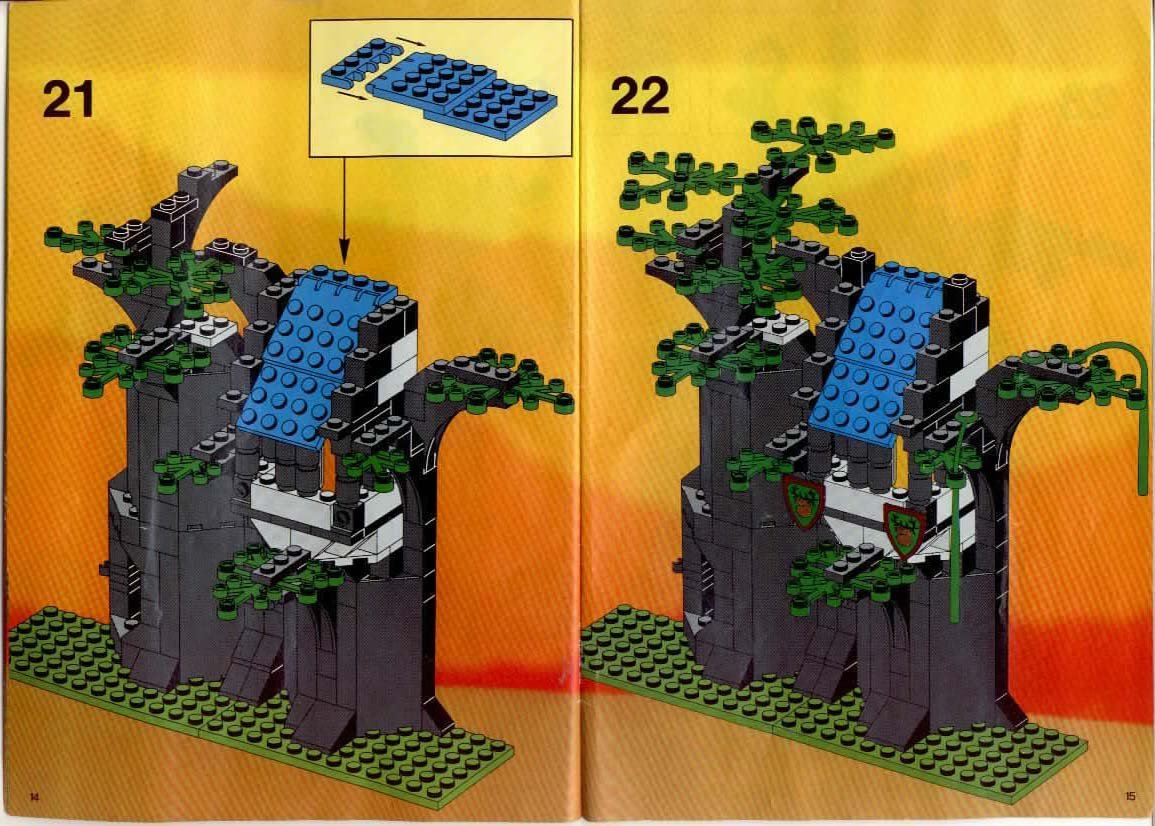
40567 Forest Hideout (yes, LEGO dropped the ”men” from the title and added a female minifigure) was released in 2022 as a GWP for the company’s 90th anniversary. I personally wish this had been a full release as a retailly available set rather than a GWP at a certain price threshold. The set comes with 258 pieces and a 67-page instruction booklet measuring 6.75” x 5” (17.1cm x 12.7 cm) with 52 steps. Sub-assemblies that have numbered steps are not counted in this total.
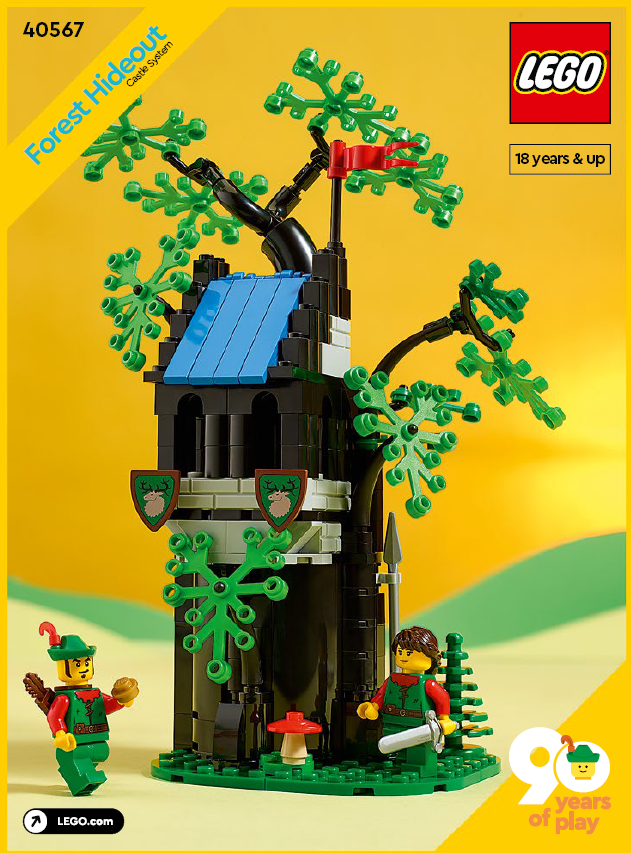
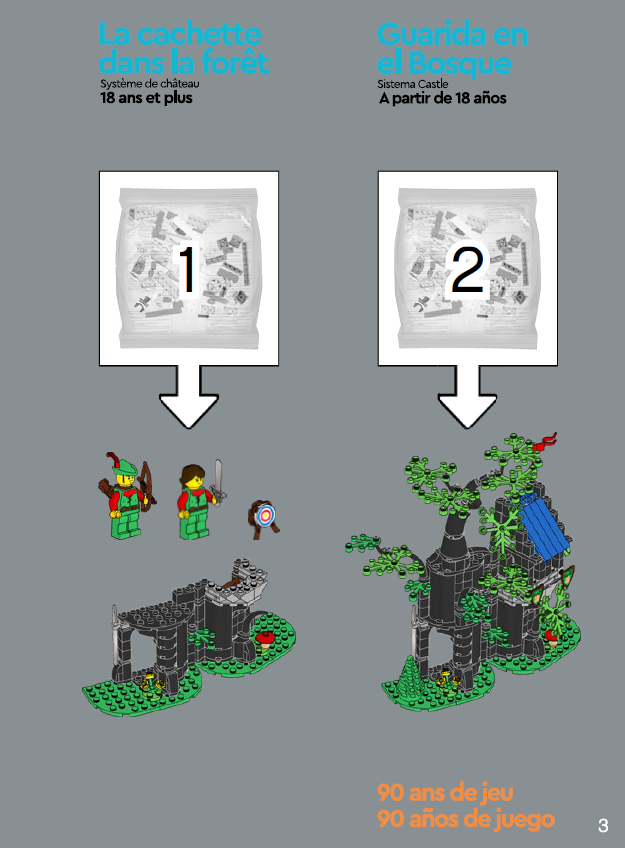
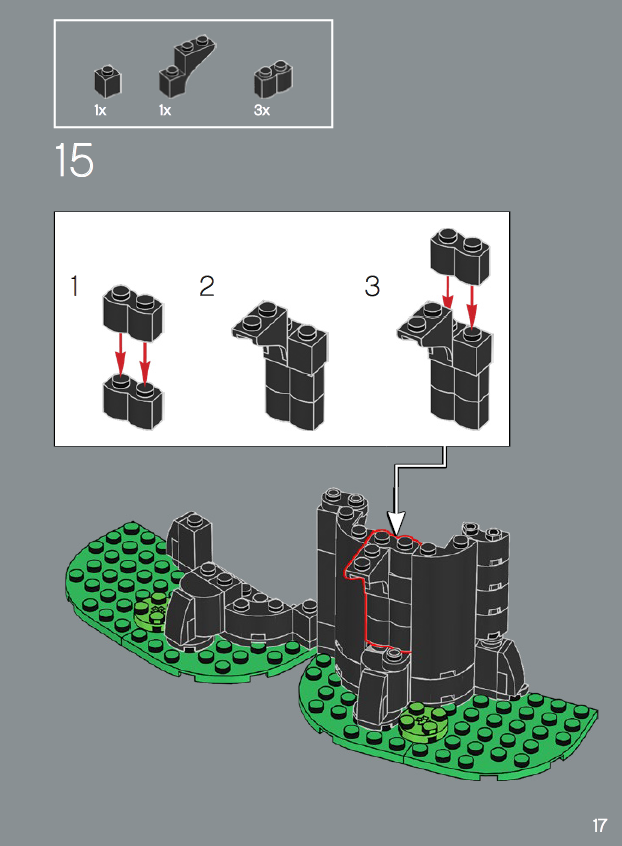

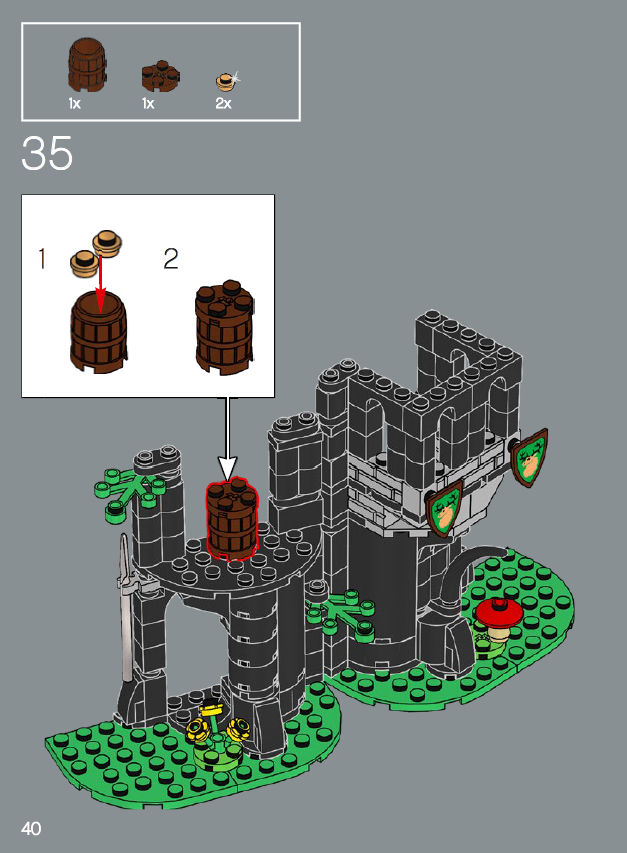
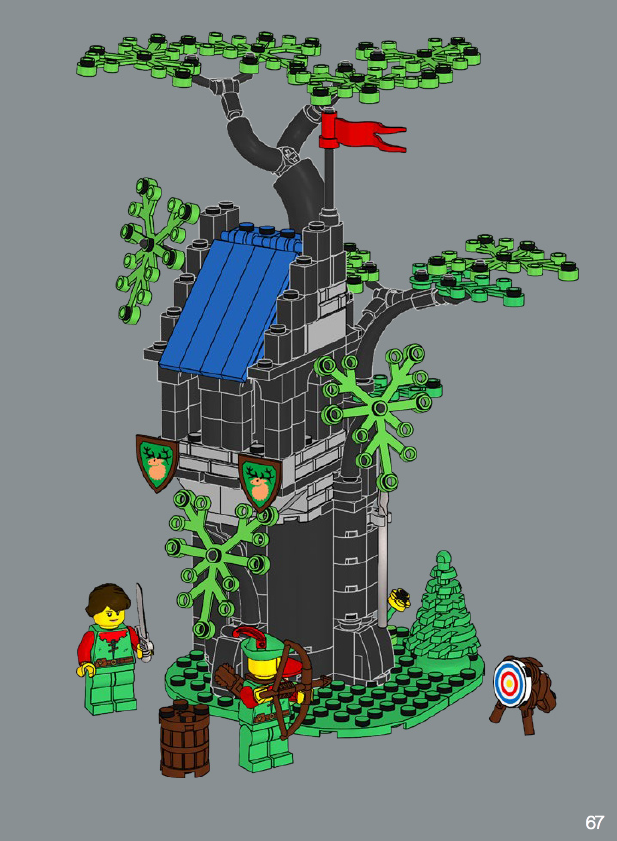
So clearly there is some weight to the grumpy old AFOL comment. Four times the page count, and more than double the step count! Interestingly, the new instructions have smaller images than the old ones, but this is labeled an 18+ set so that might not be a fair comparison. The newer instructions for 40567 have step inventory boxes and piece placement is highlighted in red. The older 6054 has black bricks used in the current step highlighted in a subtle white outline. Bricks that had already been placed are colored a very dark grey and outlined with black—was LEGO Batman in charge of this!?
I know a few AFOLs who did not build as children and a few adults who have never or rarely built. Not knowing which pieces come next is a common complaint. I for one do like the step inventory boxes; I don’t always use them, but they are great for when I make a mistake, when I am helping someone out on a set, or for cases when I hear “Dad, I have this extra piece that I don’t think I should have.” I also love set inventories for similar reasons.
Instruction Philosophy
Something else that stood out to me is that the progression of the instructions is very different. In the older 6054, the build is very layered so that the whole build rises at the same rate from the bottom to the top, not unlike a 3-D printer. Now there is some variation as the use of large wall panel pieces has a dramatic effect, but you’re almost always adding bricks consistently at the same level.
The newer 40567 is different. Up to step 10, it is very much like the old instructions with everything being built on the same level as you build up from the foundation. From step 11 on though, you start alternating: the right-hand side is built up to a logical break point, then the left-hand side is built up to the same level, then you switch back to the right, and so on.
Now the reasoning for some of this is to allow for “bag breaks” (this is seen in the latter half of the build and with bag 2 as well). The numbering of the bags has a direct impact on the instructions. As much as I do really miss the joy of ripping open all the bags in a set and digging through a massive pile of parts like I did as a kid, the relatively newer numbered bag system has a ton of benefits. The natural break points are great for when you know you can’t build a set all at once, need your kid to break for dinner, or when you need to narrow down where that extra 1x8 plate came from at the end of a bag that you now know you should have used somewhere. Let’s face it, sometimes adulting just gets in the way of playtime, and if the parts are still in the bag, that means less chaos can get dumped on the floor while the disaster of the moment gets handled.
The History of the Matter
Let’s step back into the past. Can you believe that at one time, LEGO instructions were hand-drawn? LEGO employees used to take pictures of the builds at different stages, then use tracing paper on top of the developed photograph to draw the outline. That's why the older hand-drawn instructions still look similar to today’s versions. (Thanks to our Nerd-in-Chief Dave for that info he learned on an Inside Tour!)
I used a combination of Brickset and Peeron to look at a few older sets with similar part counts (~200 pieces) and you can definitely see this! 1964’s 323 Train has 253 pieces and 6 steps. The view of each instruction step is all from the same angle. From a technology point of view, this is likely a result of hand-drawn instructions direct from a photo.
While the train is a blocky build for sure, comparing the older hand-drawn instructions to instructions from the 80s is similar in time difference to comparing instruction from the 80s to today. Let’s jump in time a bit to the Maersk Line Container Ship (1650) with 220 parts—and a different angle from the train.
The ship’s instructions were obviously computer-assisted in some way. We reached out to LEGO Corporate Historian Kristian Reimer Hauge (hey this is BrickNerd, did you not expect us to not go full-on Nerd here!?) and asked about the change. We learned that around 2002, a new instructions software replaced an older software called Panther that LEGO had been using since 1982.
Now, Panther is a pretty generic name, and I was unable to find any other info on the program. I was curious to know if it was more of a graphics program or something more Computer-Aided-Design (CAD) in nature. AutoCAD, for comparison, was first released in the same year of 1982! Graphics and CAD programs were only first introduced in the mid-70s, so we can conclude that LEGO was definitely an early adopter of computer-assisted tools for making building instructions.
Instructions are fairly consistent between the 80s and the late 90s—we see some fancier backgrounds come into play, but I’m sure that Panther had some updates in that 20-year span. LEGO’s new software came online around 2002, so if you compare the instructions of 7152 Tie Fighter and Y-Wing (2002) and 7470 Space Shuttle Discovery STS-31 (2003), you can see that step-specific inventory call-outs started in 2003.
Based on these changes, I’m assuming that the new software was more CAD-like rather than image-based and thus able to keep track of individual parts. I have to note that LEGO Digital Designer (LDD) came out in 2004 which was a 3D building platform for fans. (Could there be a link? I don’t know but it’s certainly plausible.) In 7470 Space Shuttle, you also start to see some more guided building with the inventory call-outs but no bag numbers were included yet.
Talking amongst the BrickNerd team, it seems that bag number implementation is a whole other rabbit hole in set development history! 4757 Hogwarts Castle (from 2004) and 8421 Mobile Crane (from 2005) were two of the first sets with numbered bags that the team could remember. Interestingly though, some very recent larger sets don’t use numbered bags that you’d think they would like 21037 LEGO House—perhaps LEGO Architecture sets we the last holdouts since 21041 Great Wall of China from 2018 seems to be the last set in the line that had unnumbered bags. (Thanks for the insights Markus, Dave, and Ronald!) Further investigation will have to wait for a follow-up article.
Let’s Sum It All Up
LEGO instructions have clearly changed over the decades, with some of the changes correlated to (or even motivated by) LEGO adopting new toolsets. I’d personally argue that the parts inventory call-out boxes are an improvement as is the numbered bag system. We will see how the physical limitations of paper bags potentially change the instructions too. But more information also comes with a cost, especially from an environmental and storage point of view. Instruction books have become thicker with more paper and ink used, not even counting the multiple instruction books provided for 3-in-1 Creator sets. (Richard over at Rambling Brick thinks that physical instructions may have a limited lifespan in favor of digital-only ones, for better or for worse.)
I do think, even from a parent’s standpoint, that some steps are oversimplified; placing only one to four pieces per step in anything other than a 4+ set seems too simplified. (However I do recognize that any set could be someone’s first set, which is a valid counterargument.) So are we done with LEGO instruction book evolution? Likely not—in 10 to 15 years they could be completely different again. So stay tuned to BrickNerd, we’ll be following every step of the way!
What do you think about the design of LEGO instructions between today and the past? Or do you even bother with the instructions and just wing it? Leave your thoughts in the comments below.
Do you want to help BrickNerd continue publishing articles like this one? Become a top patron like Charlie Stephens, Marc & Liz Puleo, Paige Mueller, Rob Klingberg from Brickstuff, John & Joshua Hanlon from Beyond the Brick, Megan Lum, Andy Price, Lukas Kurth from StoneWars, Wayne Tyler, LeAnna Taylor, Monica Innis, Dan Church, and Roxanne Baxter to show your support, get early access, exclusive swag and more.


